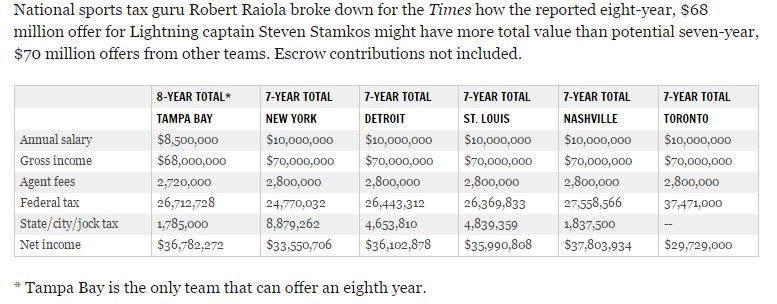After the Crisis, Opportunity
The pandemic has created the opportunity for an economic and social reset. The question is whether politicians will grasp it. Are we too focused on repairing yesterday’s world rather than building tomorrow? The biggest danger is being short on effective action. The risk is not on the left or the right — it’s inaction.
The Pandemic
Covid-19 has changed the trajectory of three big forces that are shaping the modern world. Globalization took a hit. The digital revolution has been radically accelerated. And the geopolitical rivalry between America and China has intensified.
The pandemic has compressed years’ worth of transformation into months, bringing with it a dramatic shake-up in how people live, what they buy and where they work. Fortunately the Internet we have is just good enough to make it happen. It’s not perfect, it’s not great, but just good enough to make it work. I don’t think we could have handled it as well five or ten years ago. With everyone on Zoom and Netflix at the same time, the whole world would have broken.
China
The Sino-American rivalry will continue. I don’t think Biden is in a rush to removed the tariffs imposed by the previous administration. The United-States and the world is suspicious of China. Despite for all its “vaccine diplomacy”, China inspire fear and suspicion. That means once again America will have disproportionate ability to shape the post-pandemic world. The world is splitting in two parts. One American led, the other Chinese dominated. The digital world and supply chain is designed by these two countries.
How should the US approach China? First, through diplomacy. The US need to strike a bargain with Europe (+Canada and Oceania) and form a new global alliance, binding Asian democracies into the Western coalition to counter China. Second, the U.S. and China need to send their top three diplomats on an island and workout a deal.
What’s next?
All these predictions about what the world would like post-Covid, as usual, is all nonsense. It’s just filler material. Nobody really knows. Some say we will return, eventually, to what we were before. Others say no way, we are not going back into offices and stores. But the truth will be somewhere in between.
Vaccine
The good news: We will have many more vaccines in the next six months to complement the successful candidate from Pfizer-BioNTech. That is the testament to the power of scientific collaboration. Vaccines used to take 10-20 years to create, but today there are more than 320 projects, including dozens in advanced clinical trials. As teams attack the virus from different angles the work yield considerable advances in vaccine research.
The bad news: The distribution is an absolute mess. We can’t get it to people. For a world that desperately needs to be vaccinated, looking into this is a frustration trigger.
I don’t pretend to know all the answers but I can point in the right direction: Israel. From the start they administered over 150,000 shots a day, multiple more than any other countries on earth. Let’s take what they do right and apply it.
A big difference is in their approach and attitude. Israel is in a constant war state. Their government in collaboration with the military are drilled in getting things done. Because they are surrounded by people that wants them dead for the last 70 years, they have a constant war mentality mindset. We should adapt a similar approach. Getting things done. Let’s make vaccination a giant national effort project. Let’s pool our resources in getting this done. Vaccinate day and night, weekends, including Valentine’s day, like thousand of lives depend on that effort. Our economy will come back and so are jobs. It can’t be worse than how it’s done now.
Covid-19 will not disappear but it will start to fade in the background. I’m optimistic that we will get through. Most likely a muddle through. That means getting through many obstacles but we will get there.
Stock Market
The biggest question I get is: Are we in a bubble? Well actually no ask me anymore, they just tell me we are one. There are a lot of evidences that is pointing to bubble activity (SPACs, GME, Bitcoin, Robinhoodies, Tesla, real estate etc…) So sure they are certain sectors that are absolutely mad crazy. If a 20-30-40% correction happened tomorrow I wouldn’t be surprised. Anything could trigger that. Nobody is saying it’s a good idea to buy GameStop at $150 a share.
But overall, you could argue that we are not in a bubble. Sure stocks and assets are not cheap but some stuff looks reasonable. Look at it this way. Interest rates are almost at zero. Real interest rates are negative. Central banks have indicated they are not going anywhere anytime soon. There is no where else to put your money. And on the top of that, you have the world governments going full gun blazing on the money printing press. There is so much money in the system and more is coming. It’s pointing one way: up.
Inflation
Will inflation start to kick in?

We have been lucky not to have a lot of inflation in the last thirty years (~2% official numbers). With all the money printing you would expect higher inflation and eventually higher interest rates. Anyway that’s the conventional textbook thinking. But we have been printing money for a long time without having signification inflation. Commodity prices are on the rise as the table above demonstrate.
It seems that inflation via excess money creation is coming our way. It doesn’t mean it will, but there are credible reasons to believe it will. Will it go up long term? Or is this just a short-term bump?
The best paper and book I’ve read on inflation and prices is not from an economist, but from two historians, Paul Schmelzing and David Hackett Fisher. Paul Schmelzing looked at eight centuries of interest rate in his paper: Eight centuries of global real interest rates, R-G, and the ‘suprasecular’ decline, 1311–2018 and David Hackett Fisher with his book The Great Wave: Price Revolutions and the Rhythm of History Their work puts the present day in a historical perspective encompassing many centuries.
We normally look at the demand side, but there is a supply side too. Events, like war, famine, and epidemics destroy capital and led to inflation. Human capital is the most important. Now we have a pandemic but we also have mass money flooding the system. We are currently writing the book on how this will work out. Maybe understanding the past can teach us to avoid disaster.
Bitcoin and Cryptocurrencies
Bitcoin is becoming more accepted. Bitcoin is not the most technology sound currency, but it’s the one most people believe in. A lot of professional investors have changed their tunes on Bitcoin and cryptos in the last couple of years. It’s becoming more widely accepted. I took a crypto deep dive during the 2017 bubble. I get it. It’s not simple but there’s something there but we are not there yet. The technology/infrastructure/legal framework to support crypto currencies as mainstream currencies is not there yet. I think in the future there will be higher crypto currency penetration in the economy. I guess we are all waiting for that “killer” app to force adaption. Nobody knows where it will come from or which currency will win (doesn’t have to be just one). My prediction: Cryptocurrency adoption through mass teenagers on some kind of wallet app with a closed system (where the app keeps the money instead of sending it to the bank) where they can cryptocurrency among themselves outside the banking system.. The catalyst could be a game like Fortnite where all the kids hangout and want to trade stuff.
My Crypto Fail Story
I got into crypto trading during the 2017 bubble. I was fascinated by the space and to really learn about cryptos you really need to get your hands dirty. So I opened an account (complicated back then) and invested speculated a little bit of money just to see what would happen.
I opened an account with Coinbase at first. It was the most accessible in Canada but it had drawbacks. Fees were expensive and you didn’t have access to most cryptos. There was Bitcoin and another one back then. I’m sure it’s different now. I made a little bit of money with Bitcoin and then transferred to an exchange called QuadrigaCX. It was highly recommended in Canada. Fees were lower, better relations with bank, and access to many different type of cryptos. I sold Bitcoin and bought some Ethereum and triple my money in a month. And that’s the last good part of that story because it all south from here.
I eventually got bored and moved on to other stuff. Then the bubble burst and I lost 75% of my value. Mistake #1: when you are up in gambling take you gains. Mistake #2: because my Ethereum were basically worthless at the time I didn’t care much and left them on the exchange instead of having it on a drive. The exchange, QuadrigaCX, bankrupted and the founder allegedly die in India. He used the company/money/crypto as a personal expense vehicle and was living it up. His wife says that everything was on his laptop and she doesn’t have the password. And without a key you don’t have access to the cryptos. The whole story is very controversial and is still under investigation.
The kick a guy when he’s down part: Ethereum is about 10x when where I bough it and I can’t have them. Coinbase is still around and filing for an IPO soon.
Anyway if somebody sees the QuadrigaCX founder please let me know, I would like a chat.
Super Bowl LV
Is this going to be the greatest Super Bowl ever? The expectations are going to be high. As Super Bowl matchups go, it doesn’t get much better than Tom Brady vs. Patrick Mahomes. The GOAT vs the Kid. One is 43 and the other is 25 years old. That’s a 18 year gap. That’s like 6 average NFL career. It’s also weird that the Patriots are not there.
I’m going with the Chiefs. The line is 3 points and Chiefs are favorite. The over/under is 56.5.
Tom Brady
This is Tom Brady’s 10th Super Bowl appearance and this time on a different team at 43 years old. Just writing that was weird. The guy still competes at the highest level. It seems like he’s getting better. How is the even possible? I mean aren’t you tired of getting sacked by monsters? He should be broken.
NHL
Hockey is back and Canada has its own division, the North. Montreal Canadiens will grab the top spot.
Cheers,
Brian







